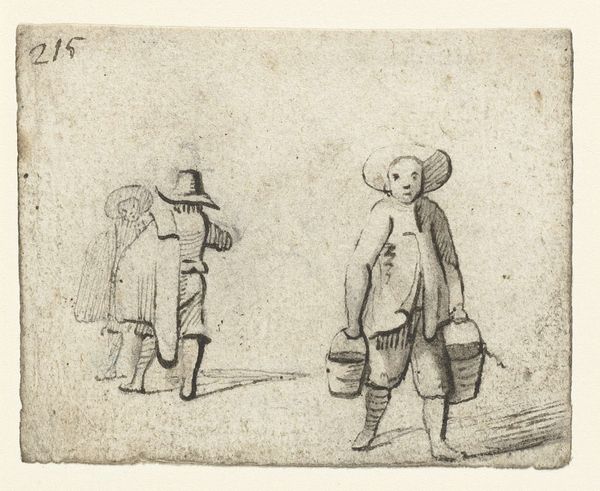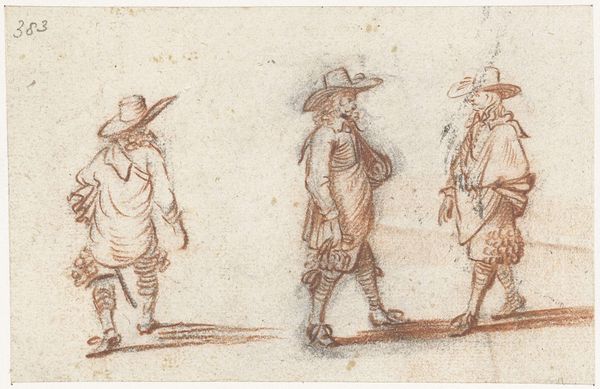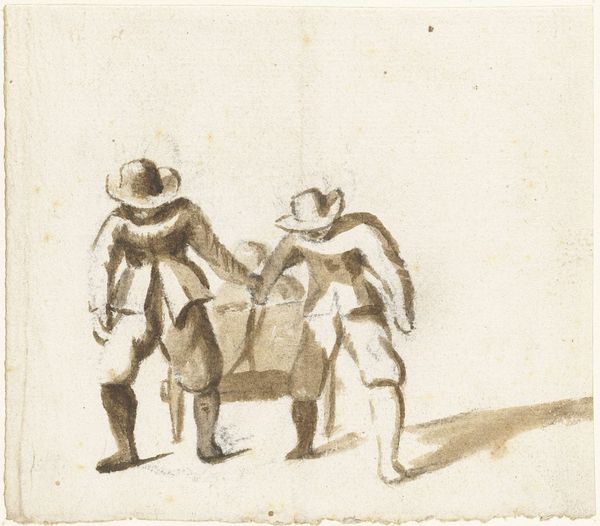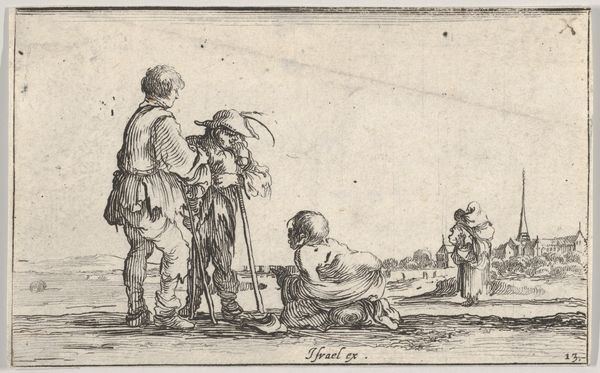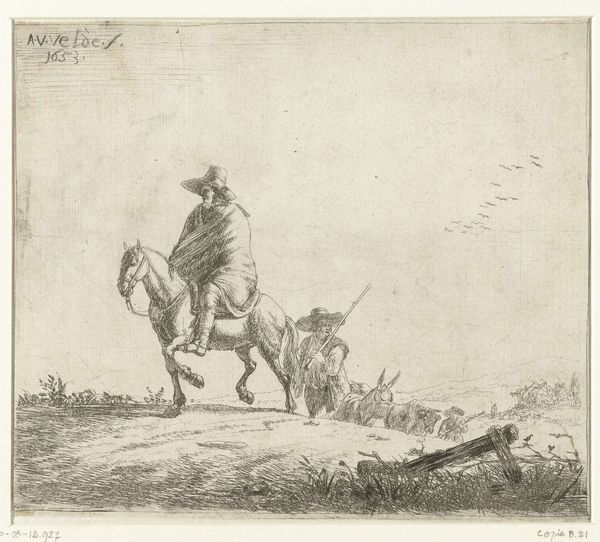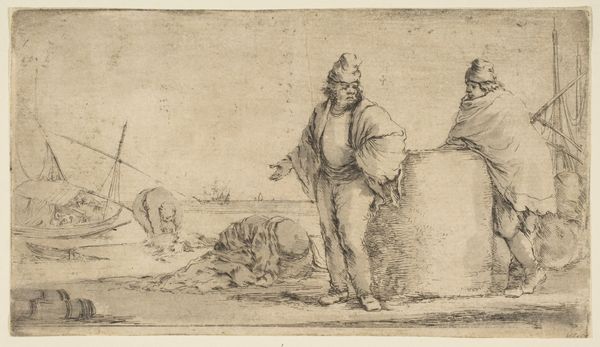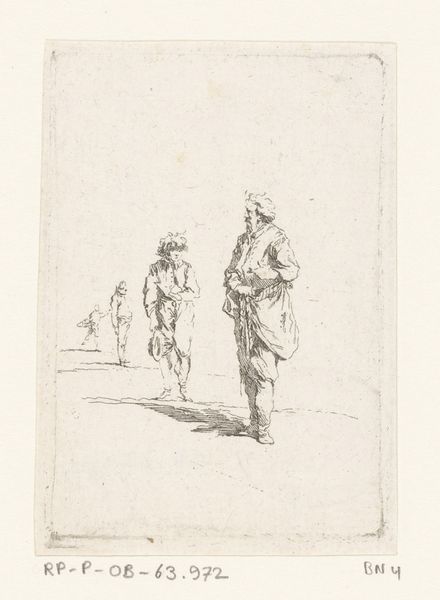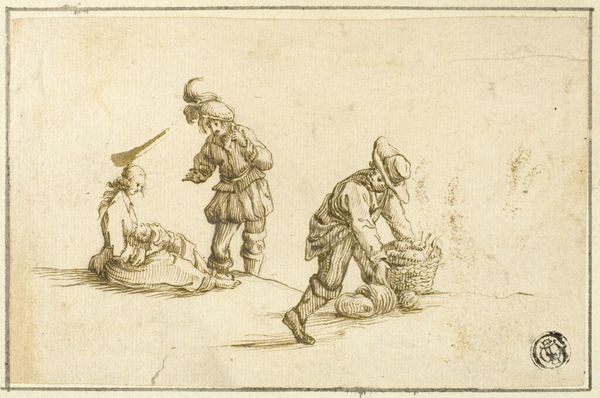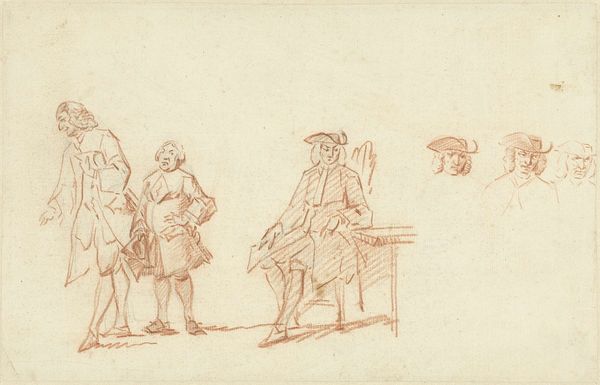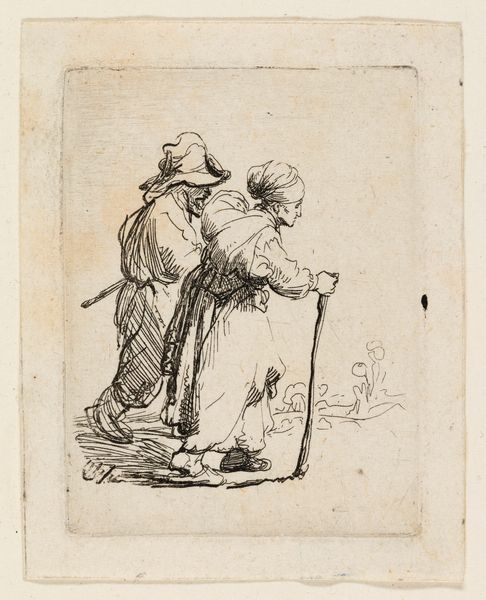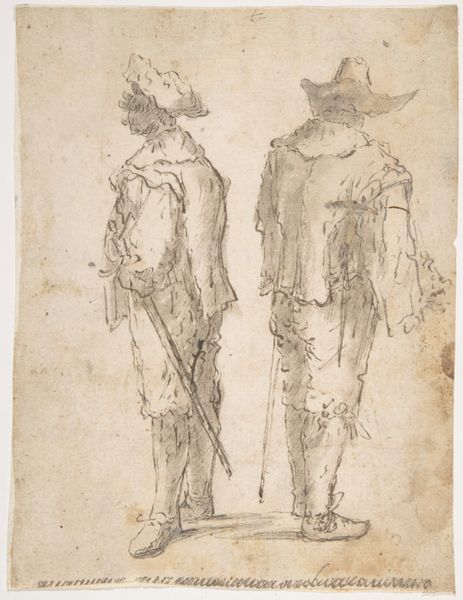
drawing, pen
#
drawing
#
dutch-golden-age
#
pencil sketch
#
landscape
#
pen
#
genre-painting
Dimensions: height 210 mm, width 333 mm
Copyright: Rijks Museum: Open Domain
Editor: So this is Harmen ter Borch’s "Two Boys Walking on a Path by a Fence," from before 1677, using pen and pencil. I'm struck by how immediate it feels, almost like a snapshot. The rough, quick strokes give it such a sense of movement, of a moment caught in time. What's your take on it? Curator: It's compelling to consider the socio-economic implications embedded in ter Borch's choice of subject and medium. These are not idealized portraits of the aristocracy, but rather an observation of everyday labor, of boys walking and possibly herding animals. Notice the simplicity of the line and the directness of the composition – the work emphasizes the real and relatable labor involved in rural life. Does the humble nature of the materials—pen and pencil—impact how you perceive this depiction of laborers? Editor: Definitely. The common materials contrast so sharply with the polished works often shown at the time. You start to think about who *could* afford these grand paintings versus who is doing labor, in the fields and creating the very foundation of Dutch prosperity. It's thought-provoking! The labor of art itself is also more obvious because of it. Curator: Exactly! This rawness disrupts the artifice we often associate with Golden Age painting, bringing forward questions about artistic production. Who was ter Borch depicting? Who would have viewed it? How might it speak to the complex relationships between different social strata? By understanding that artmaking and materials always involve labor we recognize that even drawings are historical and social productions. Editor: It reframes the entire narrative, looking not just at "high art", but art’s role in daily life, society, even consumption! Thank you, this shifted my perspective. Curator: Indeed, thinking about it that way transforms how we look at artistic representations, understanding them as embedded within broader socio-economic contexts.
Comments
No comments
Be the first to comment and join the conversation on the ultimate creative platform.
